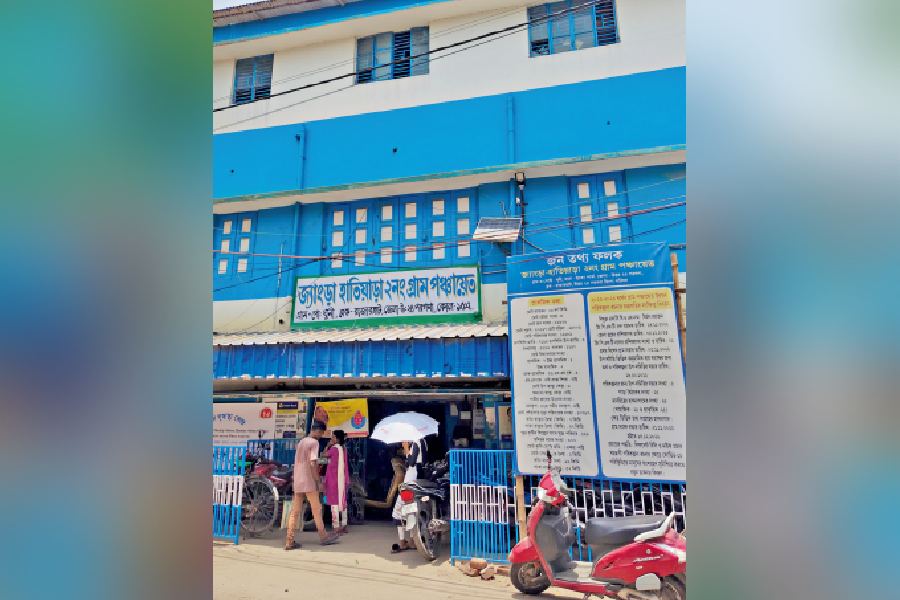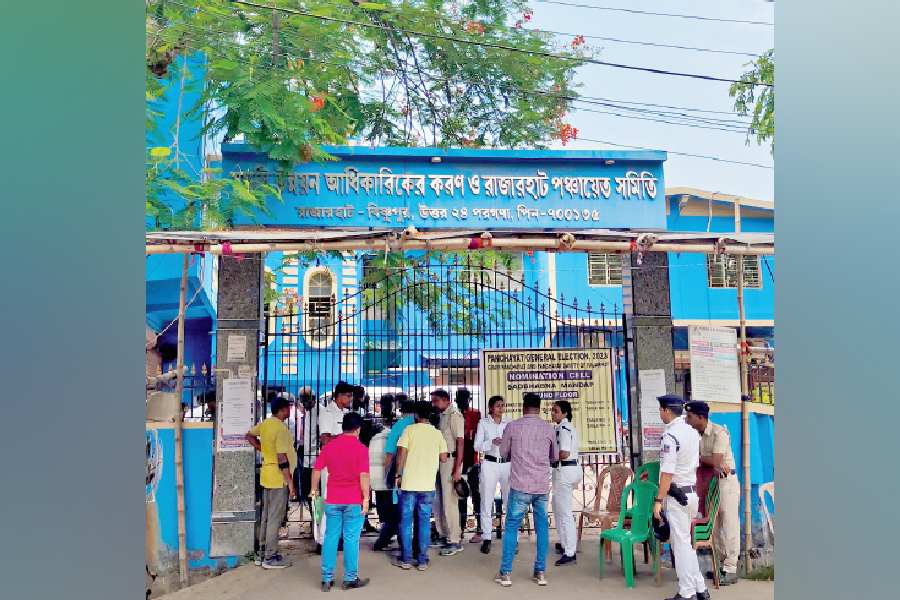On July 8, several parts of New Town that have housing complexes with highrise towers and swanky shopping malls will be a part of this year’s panchayat elections.
Although a prolonged campaign was launched by the residents of New Town and more than 6,000 signatures along with a petition requesting that the planned areas of New Town be excluded from the Jyangra-Hatiara II Gram Panchayat was submitted at multiple levels, including the offices of the panchayat minister, the effort has not yielded any results yet.
A senior government official from the district administration told The Telegraph Salt Lake that they themselves were taken aback as multiple review meets were held to solve what was “seemingly a case of overlapping jurisdiction”.
“Several meetings had been held regarding this issue and there has been an instance where a notification regarding panchayat elections had been amended. However this time there was very little time to do so. If New Town was to be excluded then it would have meant that a new delimitation process would have to be conducted that could push the entire electoral process back by at least six months,” the official said.
According to the notification issued for the panchayat elections by the Rajarhat Development Block in North 24-Parganas, eight mouzas in New Town Action Area IA, IB, IC, ID, IIB, IIE and parts of Action Area III are under Jyangra Hatiara II gram panchayat and will go to polls on July 8. These areas will elect eight members of the panchayat samity.
In the 2018 panchayat polls, there were only two seats from New Town. The number increased after the delimitation exercise. Another senior district official said that although there was resentment among residents of New Town about being part of a gram panchayat the notification could not be amended as the elections have to be held within a month of being announced.
“We had held meetings with officials from the NKDA. However excluding New Town would need extensive delimitation and we simply could not stall the entire panchayat election process for the entire state,” said the official.
According to the BDO’s office in Rajarhat, there are around 13,000 voters in these eight mouzas that fall under the planned areas of New Town and the number of people is too small for it to become a part of a bigger urban local body in terms of population alone.
Another senior NKDA official said that despite being listed as panchayat areas all these areas still fell under the ambit of the agency and Schedule I of the New Town Kolkata Development Act clearly states out the boundaries where NKDA has powers to act as an urban local body.
This essentially means that NKDA still has the authority to collect property taxes, sanction building plans, build and maintain roads and parks among rendering other civic services. That is what has confused residents.
Bappaditya Das, a resident of Sukhobrishti Housing Complex, wondered if they have to pay taxes according to the panchayat slab or the existing slab under the NKDA.
“New Town residents are paying taxes that are higher compared to any other part of the city. If we are supposed to be part of a gram panchayat then we will pay taxes to the panchayat only. Why will we keep paying taxes at a much higher rate?” said Das.

The Jyangra Hatiara Gram Panchayat 2, about 2km interior from the Major Arterial Road opposite The Westin Kolkata Rajarhat. This is where the winning representatives will sit. Picture by Debasmita Bhattacharjee
Saptarshi Deb of the CPM said they would contest the elections as a political party but it was not right for a planned city like New Town to have parts under a gram panchayat. “New Town needs an elected body but a municipality would be more suitable. The level of civic services provided in New Town will need funds that are not possible from a gram panchayat to have,” said Deb.
Anupam Ghosh of the BJP said that they have already fielded candidates and will fight the elections but said that he being a resident of New Town himself was apprehensive about how many residents would actually go out and vote.
“Given the level of violence the state is witnessing during nomination filing in various places, including Bhangore that is close to New Town, many residents would not step out to vote in fear,” said Ghosh. Rajarhat New Town Youth Trinamul Congress president Mohd.
Aftabuddin said taking out New Town from the gram panchayat would mean stalling the entire panchayat election process for the state. “Many people thought that the election would be stalled but this could not have happened as there was very little time left and it is a long process,” said Aftabuddin.
A BJP party member from New Town who did not wish to be named said that this was a ploy by the ruling party to take a lead from these eight seats as they knew that people staying in housing complexes would not step out in numbers to cast their votes.
“They will try and cast false votes based on the number of voters in housing complexes who are not likely to vote,” said the BJP member.
Samaresh Das, chairman of the New Town Forum and News, said residents would boycott the vote. “These panchayat members will not represent much of our needs and demands. Then why will we vote?” said Das.
According to an official of the Rajarhat Block Development office, in 2007 three booths comprising two gram panchayat seats had been included in the Mahisbathan II gram panchayat. The number of voters stood at around 3,000 then.
However, despite the inclusion in the panchayat, all civic services were provided by the NKDA as and when buildings started coming up in these planned areas of New Town. In 2015, the areas falling under the Mahisbathan II gram panchayat were brought under the umbrella of the Bidhannagar Municipal Corporation (BMC).
According to the official, it was noted during a voter list review in 2017 that the number of voters in these places stood at around 13,000 and the number of panchayat seats was upped to eight, comprising 12 booths, and added to the Jyangra-Hatiara II gram panchayat.
